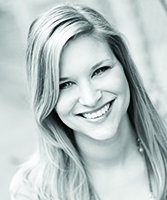Climate Control Middle East in conversation with Marisa Long, PR & Communications Director of the United States Green Building Council (USGBC), on the region’s efforts to green its built-environment and the significance of LEED certification. Excerpts from the interview…

Marisa Long
In general, how green is a Green Building a few years down the line?
The quality of a building’s green features over time has a lot to do with how they are utilised and maintained. Certain types of green technology need to be more carefully maintained and cared for in order to be effective over the lifetime of a building.
The construction industry in the region, particularly in countries like Saudi Arabia, Qatar and the UAE, is enjoying massive growth. Based on your observation, how would you describe the direction the industry is heading?
The overall trajectory of the Green Building industry in Middle Eastern countries is positive. In 2014, USGBC’s list of the Top 10 Countries for LEED included the UAE. As of April 2014, there were more than three million square metres of LEED-certified space in the Middle East and North Africa. Interest in, and engagement with LEED and Green Building, on the whole, is positive.
Are you getting more applications?
Yes, we’ve seen an uptick in registrations in the region in the past five years.
Do you foresee the number of Green Buildings growing along with the industry?
Yes, as the economy in the region continues to boom, we expect to see green construction grow, as well. In Qatar and UAE alone, there are more than 1,700 LEED APs, a strong indicator of the demand for Green Building expertise. At the end of March, Dubai announced that it is switching to green concrete. From April onwards, all new construction in Dubai will have to use green concrete. All signs point to continued growth of the Green Building industry in the region.
In terms of Green Building, how would you compare the region with the rest of the world?
The bulk of the projects in the Middle East are new construction; other countries have more existing building renovation, or operations and maintenance projects. This is probably reflective of the real estate market in the Middle East, where countries such as Qatar, Bahrain and the UAE are creating a vast number of new buildings and infrastructure, but we believe that the momentum for LEED within the new building market will eventually translate into increasing levels of enthusiasm for greening the existing built-environment in these countries.
What would you say are the major challenges in the GCC?
It is clear that water conservation will be a vital change for the entire region over the coming decades, and designing a built-environment that can help GCC countries to limit water waste and better protect their potable water reserves will become a crucial necessity.
What solutions would you propose to address those challenges?
LEED is a global rating system with regional and local applicability. The objective is always to design and construct buildings and cities that will last. LEED lends itself to longevity, encouraging architects and engineers to consider the future and plan for long-term prosperity. In every region of the world, the experts are the people on the ground, and we rely on the input of professionals living and working in the region to provide feedback on how best to implement LEED standards in any given locality. The Emirates Green Building Council and the Qatar Green Building Council both have seats at our international roundtable, a body of 40 members from around the world, all discussing how best to make LEED applicable globally.
Copyright © 2006-2025 - CPI Industry. All rights reserved.